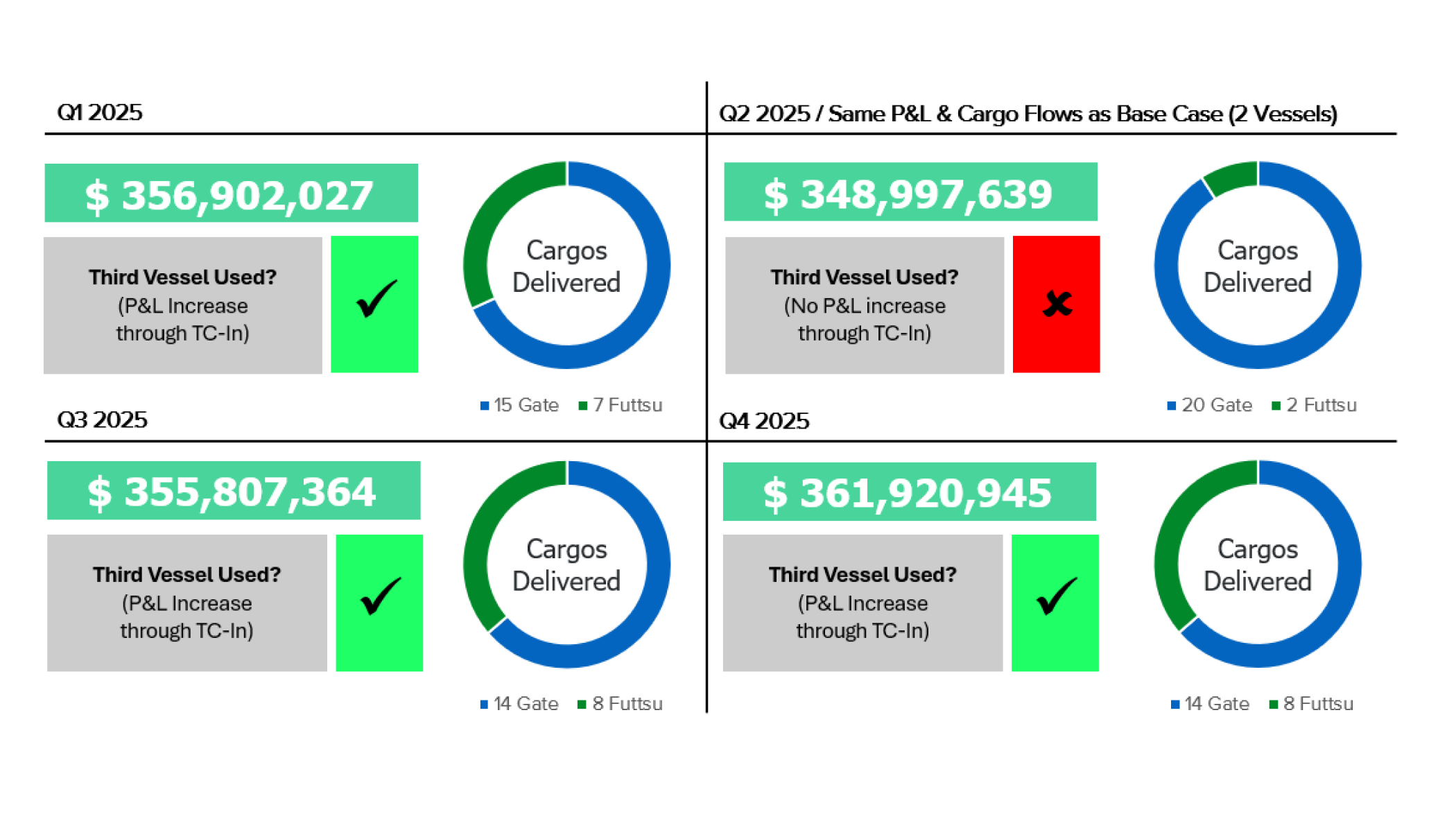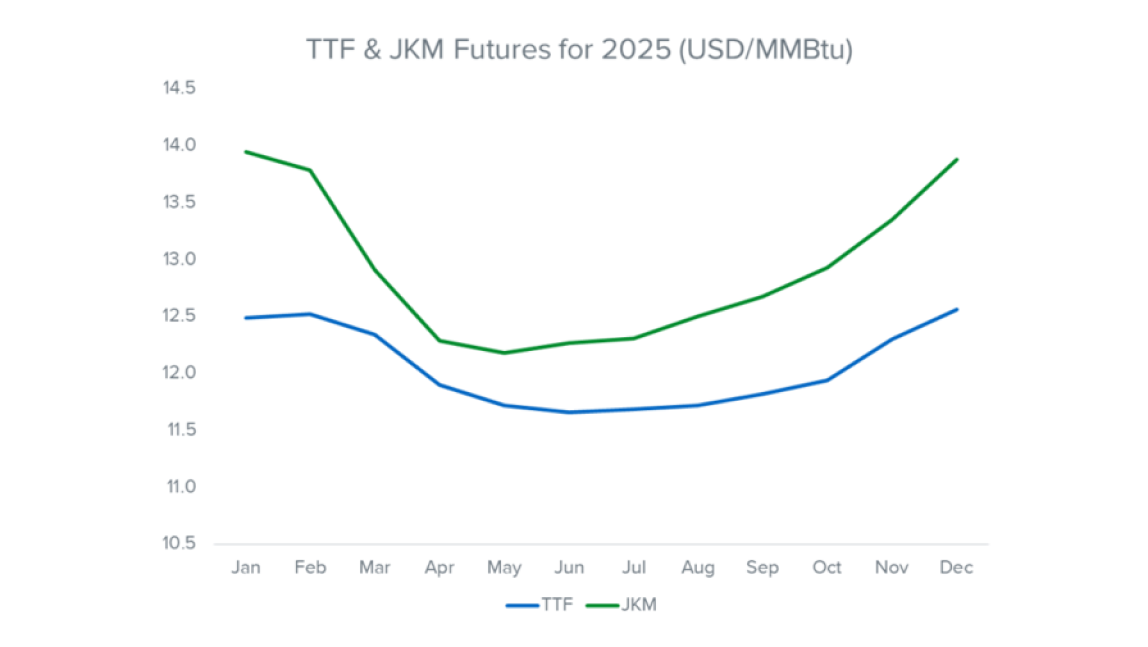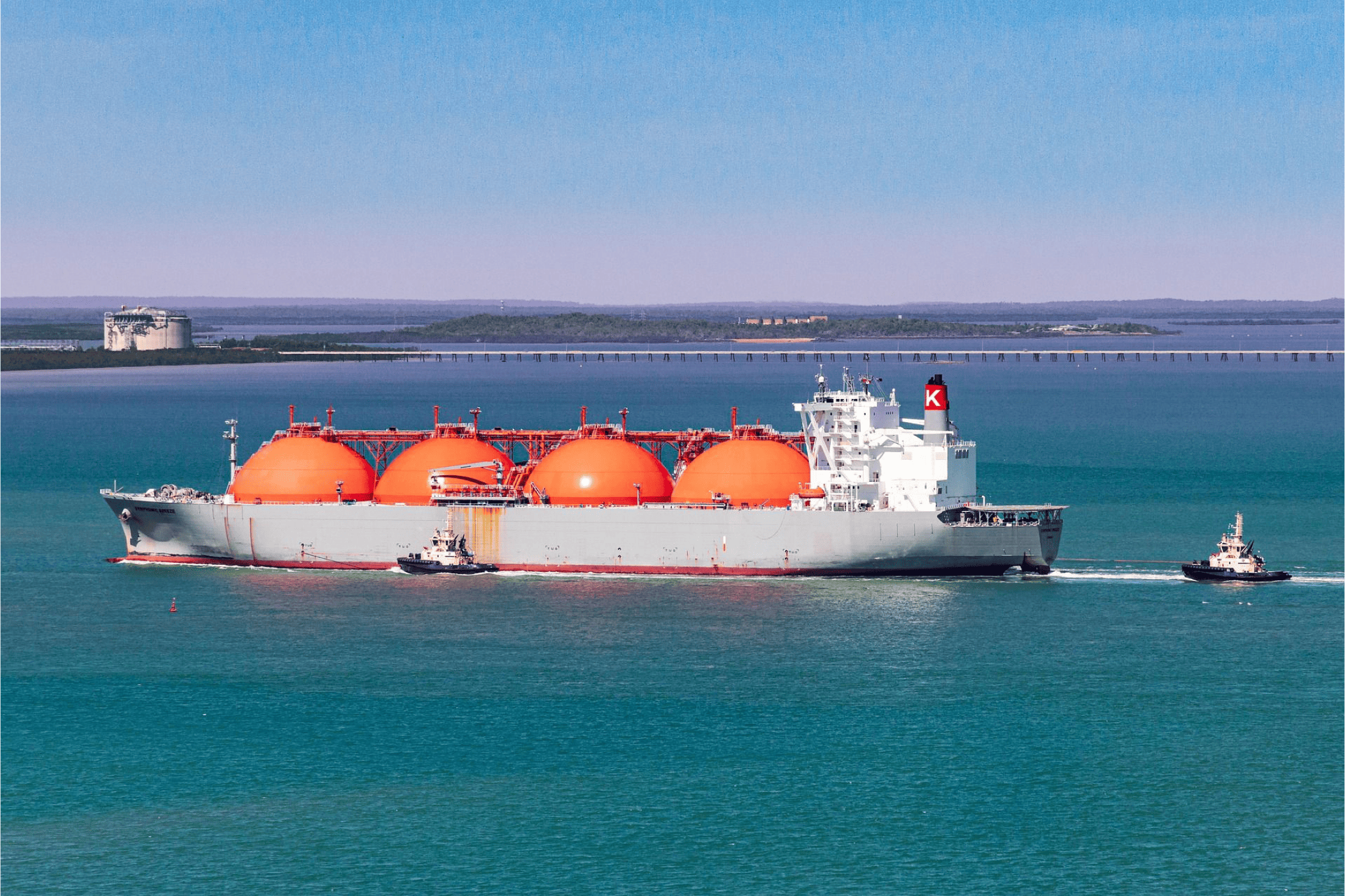Chartering Case Study: TC for JKTC US-NWE Cargos
Check out the full detailed analysis here
Using a base portfolio of 2 vessels, we show how one might assess if you should charter an additional vessel, when you should charter it for, and how much you should pay for it. The following inputs are used in the base case:
Supply (2025):
• Loading: Sabine Pass, 22 cargos
• Indexation: 115% HH + $ 3.5 tolling fee
Demand (2025):
• Discharge: Gate (spot) or Futtsu (spot)
• Indexation: 100% TTF or 100% JKM
Fleet:
• 2 × 174k vessels + 1 TC-In 174k (Charter rate: $48,500/day)
Prices:
• Forward curve based on futures (HH, TTF, JKM)
With shipping length of 2 vessels, NWE is a more favourable spot market due to shorter shipping distance. Next, a third vessel with different 90-day charter windows is added – leveraging X-LNG for Chartering Optimisation.


Adding TC-In for Q1, Q3 and Q4 2025
Strategically chartering a third vessel in Q1, Q3 and Q4 improves the P&L of the portfolio as compared to the base case. This is because profitability increases with the JKM-TTF spread. In Q1, Q3 and Q4, the JKM-TTF spread is sufficiently large to justify chartering a third vessel, which can ship more cargos to Asia.
X-LNG also tells the breakeven charter rate for the third vessel. Q4 stands out as the most profitable time to charter, with a break-even rate of $93,750/day.
Adding TC-In for Q2 2025
Chartering the third vessel in Q2 does not change the P&L and cargo flow as compared to the base case because the third vessel is not in use. The JKM-TTF spread is low in Q2, making the chartering of the third vessel not profitable.

.svg)
Legal Notice
Impressum
Angaben gemäß § 5 TMG
Calypso Ventures GmbH
Bismarckstraße 10/12
10625 Berlin
Handelsregister: HRB 239736 B
Amtsgericht Charlottenburg
Umsatzsteuer: DE342781749
Vertreten durch:
Michael Schach
Kontakt
Telefon: +49 30 41734423
E-Mail: [email protected]
Nutzungsvereinbarungen
Imprint
Disclosures according to German law § 5 TMG
Calypso Ventures GmbH
Bismarckstraße 10/12
10625 Berlin
Registered number: HRB 239736 B
Amtsgericht Charlottenburg (Germany)
VAT: DE342781749
Represented by:
Michael Schach
Contact
Phone: +49 30 41734423
E-Mail: [email protected]
User Agreements
Chartering Case Study: TC for JKTC US-NWE Cargos

Check out the full detailed analysis here
Using a base portfolio of 2 vessels, we show how one might assess if you should charter an additional vessel, when you should charter it for, and how much you should pay for it. The following inputs are used in the base case:
Supply (2025):
• Loading: Sabine Pass, 22 cargos
• Indexation: 115% HH + $ 3.5 tolling fee
Demand (2025):
• Discharge: Gate (spot) or Futtsu (spot)
• Indexation: 100% TTF or 100% JKM
Fleet:
• 2 × 174k vessels + 1 TC-In 174k (Charter rate: $48,500/day)
Prices:
• Forward curve based on futures (HH, TTF, JKM)
With shipping length of 2 vessels, NWE is a more favourable spot market due to shorter shipping distance. Next, a third vessel with different 90-day charter windows is added – leveraging X-LNG for Chartering Optimisation.
Adding TC-In for Q1, Q3 and Q4 2025

Strategically chartering a third vessel in Q1, Q3 and Q4 improves the P&L of the portfolio as compared to the base case. This is because profitability increases with the JKM-TTF spread. In Q1, Q3 and Q4, the JKM-TTF spread is sufficiently large to justify chartering a third vessel, which can ship more cargos to Asia.
X-LNG also tells the breakeven charter rate for the third vessel. Q4 stands out as the most profitable time to charter, with a break-even rate of $93,750/day.
Adding TC-In for Q2 2025

Chartering the third vessel in Q2 does not change the P&L and cargo flow as compared to the base case because the third vessel is not in use. The JKM-TTF spread is low in Q2, making the chartering of the third vessel not profitable.

.svg)
Legal Notice
Impressum
Angaben gemäß § 5 TMG
Calypso Ventures GmbH
Bismarckstraße 10/12
10625 Berlin
Handelsregister: HRB 239736 B
Amtsgericht Charlottenburg
Umsatzsteuer: DE342781749
Vertreten durch:
Michael Schach
Kontakt
Telefon: +49 30 41734423
E-Mail: [email protected]
Nutzungsvereinbarungen
Imprint
Disclosures according to German law § 5 TMG
Calypso Ventures GmbH
Bismarckstraße 10/12
10625 Berlin
Registered number: HRB 239736 B
Amtsgericht Charlottenburg (Germany)
VAT: DE342781749
Represented by:
Michael Schach
Contact
Phone: +49 30 41734423
E-Mail: [email protected]
User Agreements



.svg)
